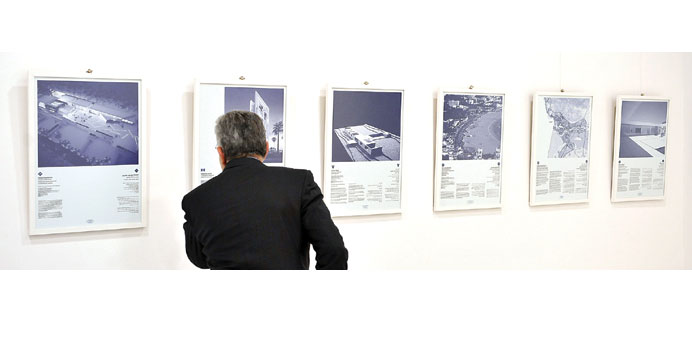Katara exhibition highlights the slice of Arabia
in Spanish architecture. By Anand Holla
Architecture, it’s said, should speak of its time and place, but yearn for timelessness. The exhibition On a Journey: Spanish Architecture in the Arab World, which opened Thursday evening at the Katara Art Centre, aimed for such timelessness by giving us a glimpse into how projects by Spanish architecture companies in Arab countries celebrated a rich history.
Organised by Casa Árabe and the Spanish Higher Council of Orders of Architects (CSCAE), the exhibition highlights the interest and necessity for co-operation among various institutions to support and promote Spanish architecture across the world. Featuring video screenings, a presentation highlighting the recurring Arab motifs in Spanish architecture, and an exhibition that offers a peek into the range of works of Spanish architect firms in Gulf countries, the event explores how the “Spain” brand has caught on abroad, and particularly in the Arab world.
Eduardo Lopez Busquets, Director General, Casa Árabe, said, “The idea is to show how our work is making an impact in Qatar, and the Middle East. We are developing projects here in Qatar as well, like we did the Islamic studies academic faculty in Qatar Foundation, the Sidra project in Qatar Foundation, or the Lusail Light Rail project. Through this exhibition, we are trying to find new ways to build a synergy between Qatar and Spain, as we are also united by a common legacy.”
That legacy is certainly special. In his note, Juan Calatrava, Professor of the ETSA of Granada, explained this further: “No analysis of Spanish contribution to contemporary architecture and urban planning in Arab countries can ignore a certain look at the past, which will immediately reveal to us what extent this contemporaneity is only a new episode in the long history of relationships, exchanges, mutual borrowings and cultural hybridisations.”
Since the medieval coexistence of Islam and Christianity on Spanish soil has lasted almost three centuries, 1766 could be the first milestone, Calatrava noted. “The Academy of San Fernando sent José de Hermosilla, Juan de Villanueva and Juan P Arnal to Granada and Cordoba to approach the first thorough study of Arab monuments in both cities, with the stated aim of integrating them into the history of national architecture and the result of the belated (1804) but splendid publication of the Arab vestiges of Spain. During the 19th Century, the exaltation with which romantic travellers admired Spanish Islamic monuments constituted one of the basic features of modern Orientalism.”
Calatrava further pointed out: “It is obvious that globalisation promotes the spreading of a certain kind of architecture equal to itself, often based on spectacular features but at the same time on increasingly diluted outlines. The Spanish contribution to Arab architecture in the 21st Century undoubtedly lies in developing the same from the critical understanding of the past, with all the richness of this previous history of contacts and exchanges.”
The reconstruction of the bazaars of Beirut, carried out by Rafael Moneo in 2009, extends the timeless feature of the architecture of thick walls, shadows and lattices to the public space and to the urban idea of integrating uses when erecting streets with new buildings, said Anatxu Zabalbeascoa, journalist and historian specialised in architecture, in his note. “This central commercial Lebanese neighbourhood is thus both building and city, a great square which allows the continuity of life in the heart of the city,” Zabalbeascoa observed.
Spanish architects’ projects in Arab countries have a common origin in the understanding of the history of the place, Zabalbeascoa said. “The Spanish architecture is not a visual experiment; it helps to build and rebuild Arab neighbourhoods and cities. It is also an economic exchange, a cultural dialogue.”
The Ambassador of Spain to Qatar, Carmen de la Peña, said, “We want to show the people of Qatar how Spanish architecture is present in Arab world, and its contribution in the development of many cities in the Mena (Middle East and North Africa) region. We have tried to build a link with the past. We have important Arab architecture in Spain, dating back to the 8th Century, and this historic architecture has been an inspiration to Spanish architecture in the Arab world.”
ARAB CONNECTION: A visitor checks out the exhibition featuring projects done by Spanish architecture firms in Gulf countries. Photos by Najeer Feroke

